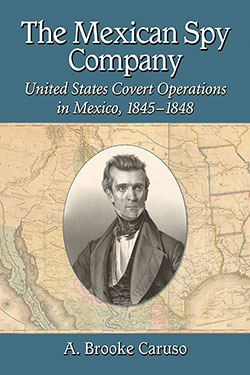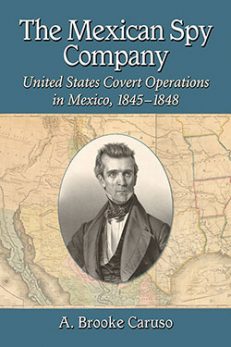The Mexican Spy Company
United States Covert Operations in Mexico, 1845–1848
$29.95
In stock
About the Book
James Knox Polk (1845–1849) was the first commander-in-chief to demand detailed knowledge of his administration’s every action. He made audacious use of covert actions and was determined to keep these operations from the Congress. Polk authorized covert operations in both the Republic of Texas and Mexico to bribe and cajole the Texans into voting to join the Union and to cause the Republic of Texas to be at war with Mexico at the time of annexation.
Secret agents were sent to Cuba; spies bribed Mexican officials not to resist the invading Americans. Mexican highwaymen were released from prison, recruited as spies, and known as “the Mexican Spy Company.” This revealing study sheds light on all of these activities.
About the Author(s)
Bibliographic Details
A. Brooke Caruso
Format: softcover (6 x 9)
Pages: 184
Bibliographic Info: 4 maps, notes, appendices, bibliography, index
Copyright Date: 2014 [1991]
pISBN: 978-0-7864-7755-5
Imprint: McFarland
Table of Contents
Table of Contents
Preface vii
Treaty with Spain, 1819: Article III 1
Part I: Texas
1. Prologue:1825–1845 5
2. The Secret War 18
Part II: Mexico
3. Dentist, Merchant, Secret Agent 43
4. Polk/Santa Anna Joint Covert Operation 62
5. Covert Operations in the Northern Mexico Campaign 80
6. Covert Operations in the New Mexico Campaign 94
7. Covert Operations in the Mexican Province of California 105
8. Beach and Storms: Secret Agents 138
9. Central Mexico Campaign of Scott 147
10. Conclusion 160
Treaty with Mexico, 1848: Article V 163
Bibliography 165
Index 171
Book Reviews & Awards
“synthesizes much material on U.S. covert operation in Texas and Mexico during the Polk administration”—Choice; “Caruso…has taken a neglected topic and analyzed it in an interesting manner. This book provides answers to murky questions, such as the surrender of New Mexico. The author can also be congratulated for writing an easy to read book that is refreshingly free of jargon, models, or theory…a compelling perspective upon a somewhat overlooked aspect of the Mexican War”—Journal of Military History.





